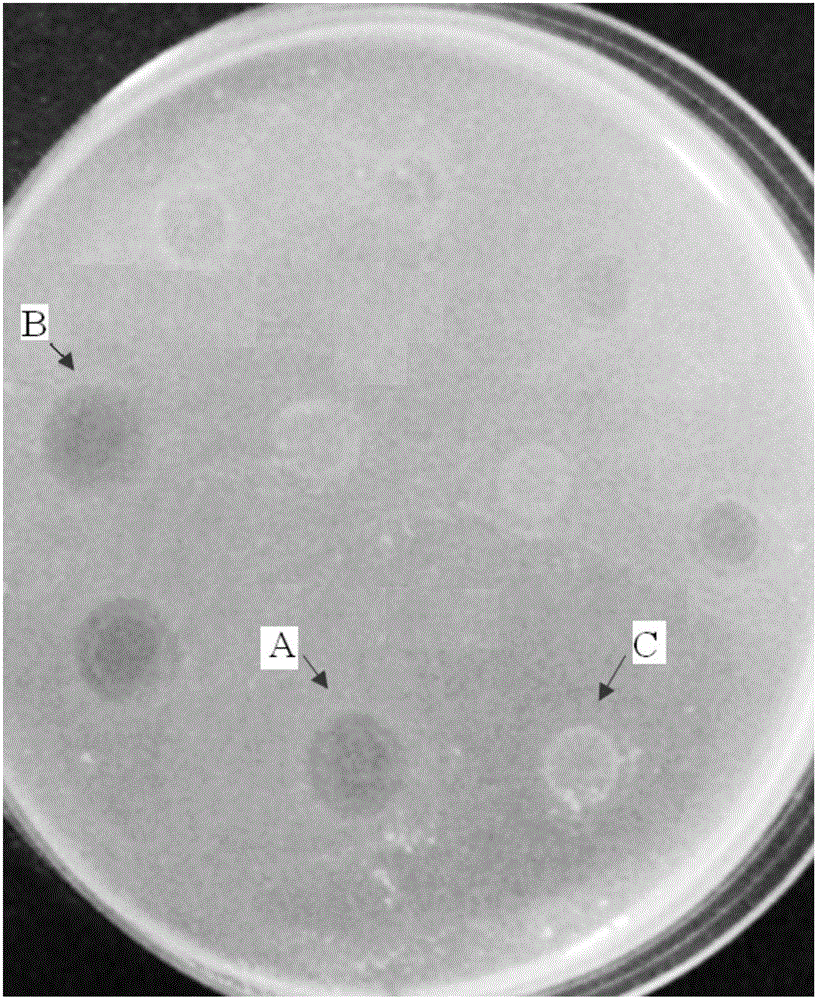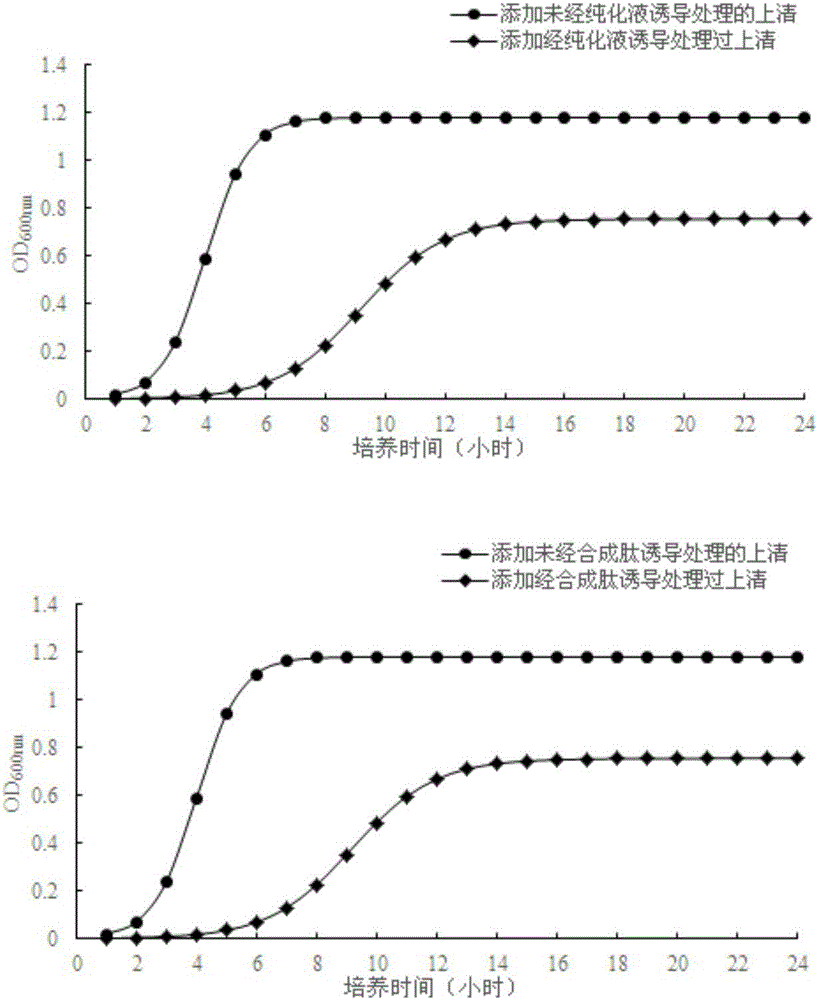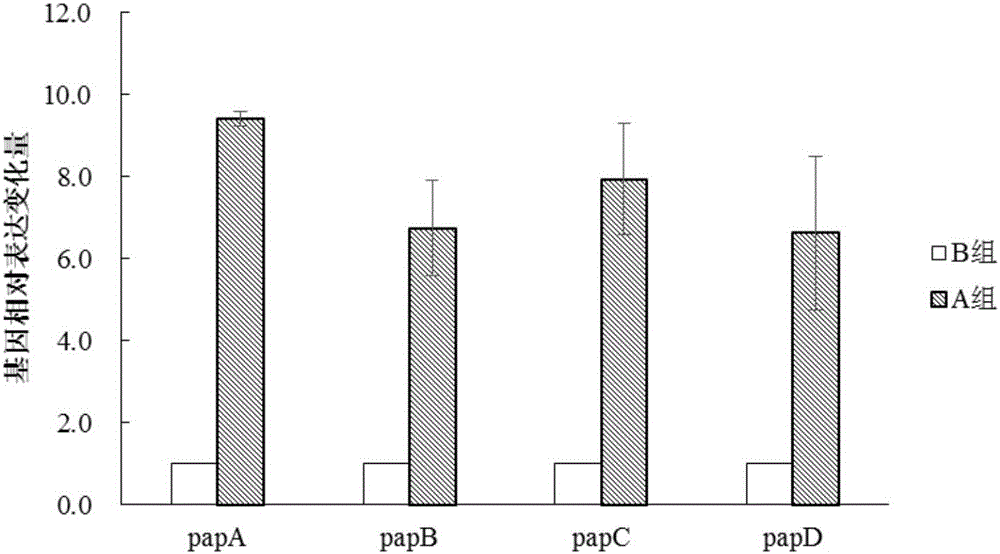Polypeptide and lactobacillus plantarum extracellular metabolite, application thereof, method for inducing lactobacillus plantarum to produce bacteriocin and identification method
An extracellular metabolite, Lactobacillus plantarum technology, applied in the field of microorganisms
- Summary
- Abstract
- Description
- Claims
- Application Information
AI Technical Summary
Problems solved by technology
Method used
Image
Examples
preparation example Construction
[0034] Thus, in a third aspect, the present invention also provides a method for preparing an extracellular metabolite of Lactobacillus plantarum containing the above-mentioned polypeptide, the method comprising:
[0035](1) performing solid-liquid separation on the fermentation product of Lactobacillus plantarum to obtain a fermentation supernatant;
[0036] (2) adding ammonium sulfate to the fermentation supernatant to carry out salting out to obtain a precipitate, and dissolving the obtained precipitate in water;
[0037] (3) performing dialysis, ion exchange and extraction on the solution obtained in step (2) in sequence, so as to obtain the extracellular metabolites of the Lactobacillus plantarum.
[0038] According to the present invention, in step (1), the culture method of the plantarum lactobacillus can adopt the conventional lactic acid bacteria culture method in the field, for example, anaerobic culture can be carried out in MRS medium at 33-40°C, or it can be speci...
preparation example 1
[0072] This preparation example is used to illustrate the preparation method of the polypeptide of the present invention
[0073] Entrust Beijing Hengyu Vision Biotechnology Co., Ltd. to synthesize the polypeptide shown in SEQ ID NO: 1 (KYYGNGVTCGKHSCSVDWGKATTCIINNGAMAWATGGHQGNHKC) of the present invention.
preparation example 2
[0075] This preparation example is used to illustrate the preparation method of the extracellular metabolites of Lactobacillus plantarum of the present invention
[0076] (1) According to the method in the 201410816266.3 patent application, the Lactobacillus plantarum subsp. plantarum Zhang-LL strain with the preservation number CGMCC No. 6936 was expanded for 24 hours.
[0077] (2) Take the fermentation broth at 4°C, centrifuge at 8000rpm for 30 minutes at low temperature to obtain the fermentation supernatant, place the fermentation supernatant at 4°C, and place it on a magnetic stirrer, slowly add ammonium sulfate powder while stirring, The final saturation with ammonium sulfate was 70%. After overnight precipitation in a refrigerator at 4°C, centrifuge at 8000 rpm for 30 min, and suspend the precipitate in deionized water whose volume is 1 / 10 of the volume of the fermentation supernatant. Centrifuge at 8000 rpm for 30 min at 4°C to remove residual insoluble matter.
[00...
PUM
| Property | Measurement | Unit |
|---|---|---|
| concentration | aaaaa | aaaaa |
Abstract
Description
Claims
Application Information
 Login to View More
Login to View More - R&D
- Intellectual Property
- Life Sciences
- Materials
- Tech Scout
- Unparalleled Data Quality
- Higher Quality Content
- 60% Fewer Hallucinations
Browse by: Latest US Patents, China's latest patents, Technical Efficacy Thesaurus, Application Domain, Technology Topic, Popular Technical Reports.
© 2025 PatSnap. All rights reserved.Legal|Privacy policy|Modern Slavery Act Transparency Statement|Sitemap|About US| Contact US: help@patsnap.com



